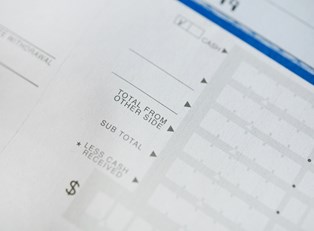After looking at the dismal interest returns on your savings account recently, you’ve decided to invest in a CD. Since you will be required to leave your money untouched in the bank’s hands for an agreed upon period of time (even if you’re struck by a sudden urge to remodel your kitchen), you should be positive that you have found the best account for your needs.
To do that, you should figure out how much extra money you will earn with this account. That’s the whole goal, anyway, right? There are a plethora of automated calculators on the internet that will calculate your earnings if you input the terms, but it’s better to learn how to manually calculate the value of your CD.
Other than getting to tell your friends that you didn’t take the easy way out, the main benefit of doing the math manually is that you can do the work in a spreadsheet for easy account comparisons. This ensures that you’ll find the best deal. Let's get crackin’.
Step One: Study CD Information
Before you can enter numbers into a spreadsheet program, you need to know your CD information. Your financial institution may opt to pay your interest income in one of two ways:
1) Your earned interest will not be added to the original value of your CD or face value or
2) Your interest earned each period will be added to your CD’s face value.
The second option is ideal because, in this situation, the value of your CD will increase after each interest period.
Step Two: Compute the Periodic Interest Rate
Are you still with us? Okay. If you will receive the face value of your CD plus accumulated interest at the end of a specified period, you need to calculate the periodic interest rate by dividing the annual interest rate (APR) by the number of compounding interest periods, N, during the year.
Compounding interest occurs when the interest earned in period one is added to the face value of the CD. During period two, you will earn interest on the original value of the CD plus the interest earned during period one, so you earn even more money in period two. This compounding process will continue during the duration of the CD’s life.
For example, assume that your CD specifies an annual interest rate of 6% and monthly interest periods. In this case, APR is 0.06 and N is 12. The periodic interest rate is 0.06/12 or 0.005. The way that math works out, after period one, you would have $5 in interest, which is added back into the CD’s value to earn interest itself.
Step Three: Calculate the Future Value of Your CD
After computing the periodic interest rate, you can determine the future value of your CD. This can be accomplished by using the formula F = P x (1 + R) ^N.
- F = future value
- P = principal (or the original value of the CD)
- R = periodic interest rate (calculated in step two)
- N = total number of compounding interest periods during the CD’s life
For instance, imagine that you invested in a 5 year, $5,000 CD that had a periodic interest rate of 0.5% and monthly compounding interest periods. The future value of this investment would be $5,000 x (1 + 0.005) ^60 or $6,744.25. That would let you see almost $2,000 growth! Not too shabby, huh?
If you’ve actually done all of this math, you should also kick back, give yourself a gold star, and enjoy your new-found self-sufficiency. You’ve learned a lot, and now you have a detailed spreadsheet with the projected monetary returns (say that 5 times fast) for the CD accounts you’re considering.



